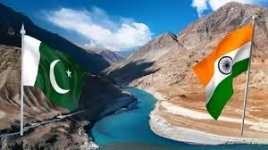Is Pakistan slowly disintegrating from within? That question, once dismissed as fantasy, is now surfacing in policy circles, media debates, and increasingly — on the ground in Pakistan’s restive provinces. Separatist movements in Balochistan and Sindh are no longer underground. They’re organized, loud, and determined. The Pakistani state, already struggling with economic collapse and political instability, now faces another threat — one that challenges the very idea of a united Pakistan.

Take Balochistan, for example — the largest province by land but one of the poorest and most neglected. It holds massive reserves of natural resources: gas, coal, copper, and gold. Yet, its people remain marginalized and impoverished. Decades of human rights abuses, enforced disappearances, and economic exploitation have created deep-rooted resentment. In 2025, this resentment boiled over. A Baloch insurgent group launched “Operation Herof 2.0,” targeting military installations and state infrastructure in a coordinated offensive. Baloch leaders in exile went further — they declared independence and called for international support, some even openly reaching out to India. While the world largely remained silent, the message was loud and clear: Balochistan no longer wants to be part of Pakistan.
Meanwhile, in Sindh, the mood isn’t much better. Sindhis, too, have long complained of being sidelined in Pakistan’s Punjabi-dominated power structure. The Jeay Sindh Freedom Movement has reawakened, and anti-Pakistan protests have intensified. There are reports of brutal crackdowns, arrests, and abductions by intelligence agencies. Adding to the unrest is a growing water crisis. Sindh accuses the federal government of stealing its water, worsening droughts and crippling agriculture. When the state fails to protect both the rights and the resources of its people, what reason is left for loyalty?
What’s happening here is not entirely new. Pakistan has a history of losing control over its own land. In 1971, after years of repression, East Pakistan broke away to become Bangladesh. The world watched as Pakistan blamed everyone but itself. Today, that playbook hasn’t changed. The state continues to accuse India, the CIA, or "foreign hands" for its internal problems — never addressing the root causes. But the fault lines are ethnic, economic, and political — and they are deepening fast.
This brings us to India. Is India fanning the flames? While no official evidence points to direct interference, some separatist leaders, particularly from Balochistan, have been vocal about seeking India's diplomatic and moral support. India, for its part, has largely maintained plausible deniability. But in the court of public opinion, even India’s soft power — its global media reach and diplomatic clout — is seen by Pakistan as a threat. And that alone gives New Delhi strategic leverage.
So, will Pakistan disappear? Not today, not tomorrow — but the writing is on the wall. A state built on religious identity is crumbling under ethnic tensions, economic decay, and military overreach. Without reforms, reconciliation, and real autonomy for its provinces, the risk of fragmentation is real. For now, Pakistan remains on the map. But its borders may not always look the same.
Take Balochistan, for example — the largest province by land but one of the poorest and most neglected. It holds massive reserves of natural resources: gas, coal, copper, and gold. Yet, its people remain marginalized and impoverished. Decades of human rights abuses, enforced disappearances, and economic exploitation have created deep-rooted resentment. In 2025, this resentment boiled over. A Baloch insurgent group launched “Operation Herof 2.0,” targeting military installations and state infrastructure in a coordinated offensive. Baloch leaders in exile went further — they declared independence and called for international support, some even openly reaching out to India. While the world largely remained silent, the message was loud and clear: Balochistan no longer wants to be part of Pakistan.
Meanwhile, in Sindh, the mood isn’t much better. Sindhis, too, have long complained of being sidelined in Pakistan’s Punjabi-dominated power structure. The Jeay Sindh Freedom Movement has reawakened, and anti-Pakistan protests have intensified. There are reports of brutal crackdowns, arrests, and abductions by intelligence agencies. Adding to the unrest is a growing water crisis. Sindh accuses the federal government of stealing its water, worsening droughts and crippling agriculture. When the state fails to protect both the rights and the resources of its people, what reason is left for loyalty?
What’s happening here is not entirely new. Pakistan has a history of losing control over its own land. In 1971, after years of repression, East Pakistan broke away to become Bangladesh. The world watched as Pakistan blamed everyone but itself. Today, that playbook hasn’t changed. The state continues to accuse India, the CIA, or "foreign hands" for its internal problems — never addressing the root causes. But the fault lines are ethnic, economic, and political — and they are deepening fast.
This brings us to India. Is India fanning the flames? While no official evidence points to direct interference, some separatist leaders, particularly from Balochistan, have been vocal about seeking India's diplomatic and moral support. India, for its part, has largely maintained plausible deniability. But in the court of public opinion, even India’s soft power — its global media reach and diplomatic clout — is seen by Pakistan as a threat. And that alone gives New Delhi strategic leverage.
So, will Pakistan disappear? Not today, not tomorrow — but the writing is on the wall. A state built on religious identity is crumbling under ethnic tensions, economic decay, and military overreach. Without reforms, reconciliation, and real autonomy for its provinces, the risk of fragmentation is real. For now, Pakistan remains on the map. But its borders may not always look the same.

